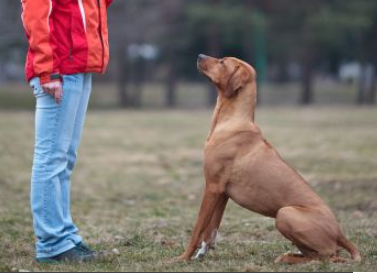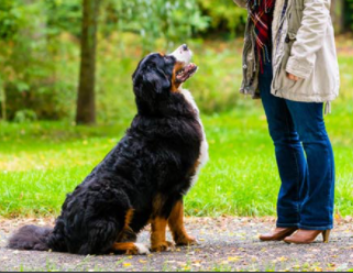My basic commands may not be what you expect, but these commands are the foundation of building on other behaviors and a successful working relationship. The obvious SIT is great, extremely common, and is extremely useful for the foundation of other behaviors. TOUCH is an awesome command too. It is not common in the pet-dog world, but boy is it useful and versatile! That’s it! Just TWO basic commands - shocking right?
Why SIT?
The obedient dog. What does that look like? In my mind, a dog sitting next to his or her owner and tuned into them. Sit can keep a dog by your side. Sit can stop a dog in its tracks. A sit can keep a dog at a distance from a trigger. A sit is the foundation of stay, down, shake, heeling etc. Sit, is a great place to start because it is a natural behavior that can be captured and rewarded, lured and rewarded, or shaped and rewarded.
TOUCH what?
So, so many behaviors can start with TOUCH. What is the dog touching? My hand with their nose. Once a dog understands this connection he/she can be lured by asking for a TOUCH with an obstacle in the way. They can come for a touch from afar. They can touch while they are heeling. The options are plentiful! The versatility of this command is what makes it so special.
SKILLS
Lure. In order to teach SIT, you can use a luring technique. It is a basic training skill to help get training initiated. With the use of food the dog is lured at his/ her nose, up and back until his/her bottom touches the floor [YES] - then release the food and say SIT. *Remember from the Communication article that the [YES] marker lets the dog know the behavior at that precise moment will result in a reward.* Hold the treat at the dog’s nose and make a circle shape with the dog following - the beginning of spin. Bring the treat to the ground and wait for the dog to lay down in an effort to get access - lay down. Luring is a great training skill and can be utilized to teach other behaviors too!
Thumb Tuck.

It’s a treat-dispensing hack. Part of training are hacks to get food, toys, and responses quickly and precisely to the dog. When I teach touch or come or other behaviors with a lure or immediate treat finish, I tuck the treat under my thumb at my palm. This way the treat is ready when the pup touches his nose!
Touch
First, train touch by having the pup find the food at your hand, where the treat is already hiding. After a few repetitions, he/ she should start getting the hang of it. Try varying the placement of the treat touch hand. Next, graduate to putting the touch hand out; after the touch contact [YES] is made provide the treat with the OTHER hand. Now, repeat to proof the response and graduate to games!
Lure SIT
Take a treat to the dog’s nose and back until his/her bottom touches [YES] & reward. Repeat until it is proofed and then install the command when the dog’s bottom is on the ground. Lure - Sit - YES - SIT. You have now installed the command SIT to the behavior of their bottom touching the floor. Once the dog knows SIT means their bottom touches the floor it can be used to cue the behavior and rewarded. Then try to create distance from the dog and the luring hand.

Then just swipe up with the luring hand, which is
similar from his/ her perspective to the luring gesture. This will become the hand signal. Lastly, try using the verbal or hand signal independently to proof each of them. Then create distance. Then distraction. Confidence and willingness are built off of successes so please don’t rush or double down with distance and distractions at once.
Games.
Come. [Touch]
Put your touch hand out and reward when the dog comes! Add COME cue when the dog has successfully come all the way. This way there is no confusion about when the behavior has been completed.
Tunnel. [Touch]

Stand with your legs apart and put the touch hand on the far side of your body from the dog. When the dog passes through your legs to touch [YES] and reward!
Walk and Switch [Touch]
While out of the walk offer touch opportunities to check in with your dog. Have him/her switch sides offering your touch hand as the cue. {YES] and reward.
Utilizing these basic behaviors, installing cues, and making it a rewarding experience for the dog begins a relationship of trust and confidence between handler and dog. What behaviors can you shape with a lure? What is the most challenging environment you can receive the behaviors you are looking for from your dog in/ at. Can you build on this by next week?
When play is work, work is play.
Jackie Ward; Citali Dog Training






Comments